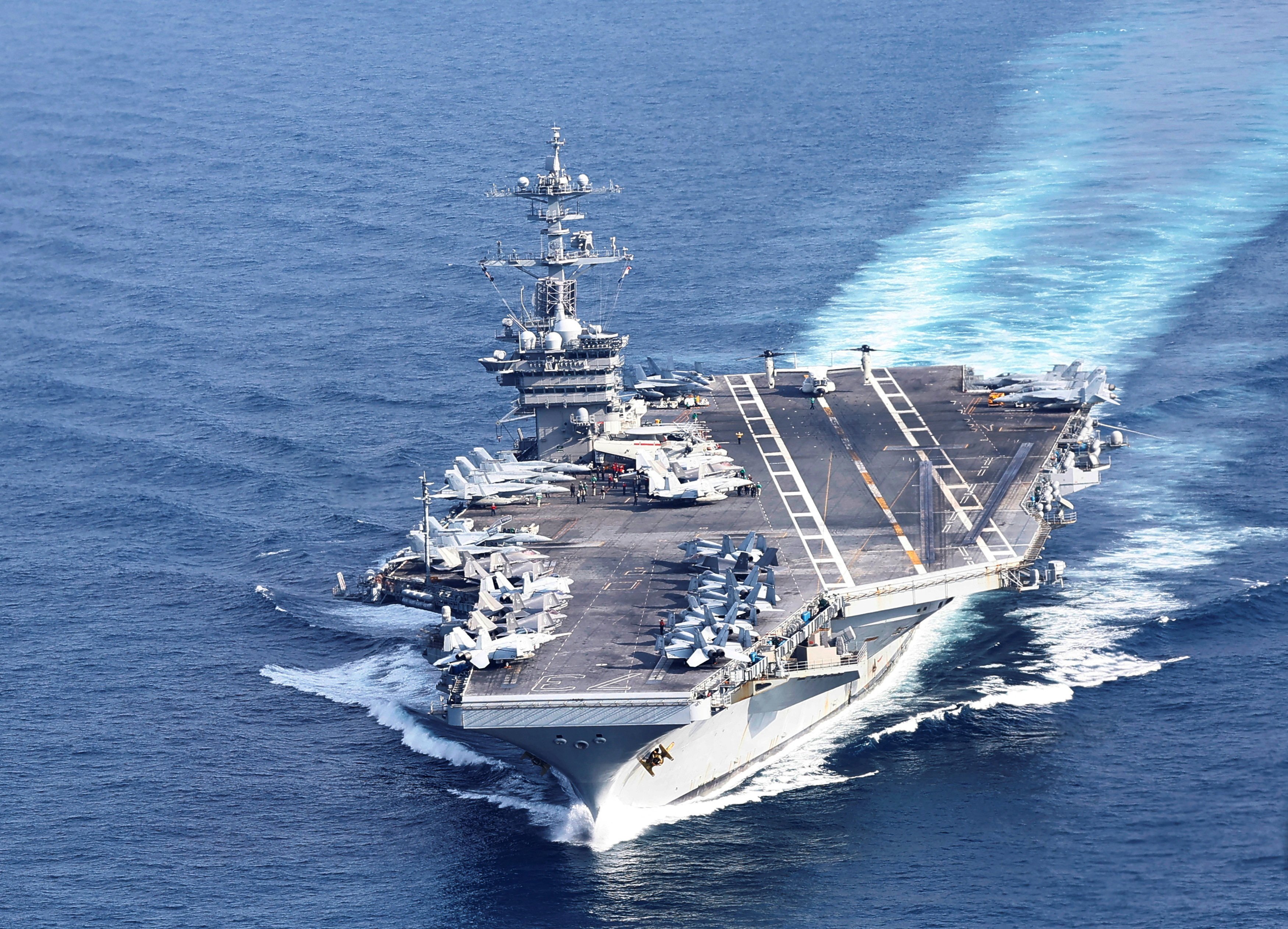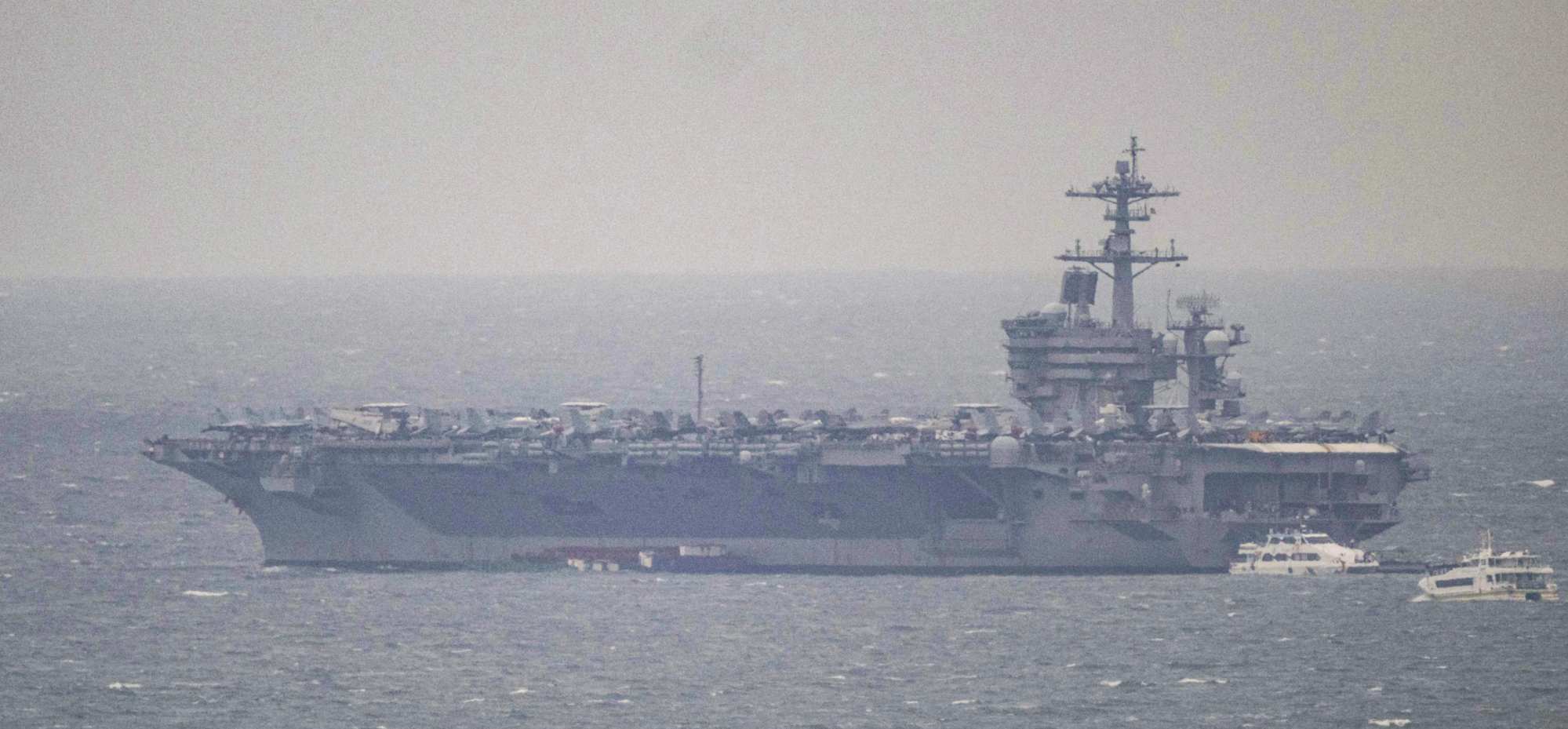US aircraft carrier marks South China Sea focus but also ‘crowded’ region
The USS George Washington’s Manila port call comes just days after China deployed two of its carriers to the Western Pacific for military drills

The presence of the USS George Washington aircraft carrier in the South China Sea this week and its port call at Manila signals renewed American commitment to the Philippines, though observers warn that Beijing could view the move as a “containment” effort and ramp up its own naval activity in the disputed waters.
Flight deck operations were opened to the media aboard the Nimitz-class nuclear-powered vessel, with commanding officer Captain Timothy Waits telling reporters his ship’s mission marked the United States’ focus on a free and open Indo-Pacific.
“We know the importance of this theatre or this region. It’s a vast region, many nations. Most of them will be on the coastline. The importance of the open and free sea lanes, just from a commercial aspect alone, is important to them. It’s important to us. And in that way, we share those values so that our being out here,” he said on Wednesday.
Currently docked off Manila Bay, the presence of the US vessel comes just days after China deployed two of its own aircraft carriers to the Western Pacific for military drills.
The exercises prompted senior leaders, including US Secretary of State Marco Rubio, India’s External Affairs Minister S. Jaishankar, Japan’s Foreign Minister Takeshi Iwaya, and Australian Foreign Minister Penny Wong, to raise serious concerns over the situation in the East and South China Seas.
Beijing claims most of the South China Sea, rejecting rival claims from other countries, including the Philippines, and a 2016 international ruling that its assertion over the waterway has no legal basis.

Last month, Manila accused China’s coastguard of firing a water cannon at a civilian vessel from the Philippines’ Bureau of Fisheries and Aquatic Resources while delivering supplies to Filipino fishers near Scarborough Shoal – one of several contested areas in the South China Sea.
Observers note that the USS George Washington’s presence is to reassure regional partners that maintaining “free and open” sea lines remains an American priority.
Vina Nadjibulla, vice-president of research and strategy at the Asia-Pacific Foundation of Canada, told This Week in Asia that the aircraft carrier’s visit signalled Washington’s commitment to the region despite crises in the Middle East and Europe.
She added that the move was consistent with a steady uptick in US–Philippines defence cooperation, such as expanded access to Philippine bases under the Enhanced Defence Cooperation Agreement, larger Balikatan or joint exercises, and more frequent joint patrols.
“Beijing will view the port call as further evidence of US containment and justification for China’s stepped-up naval activity, including ‘grey-zone’ tactics designed to pressure US regional allies,” she warned.
Dr Anita Abbott, chair of New Zealand-based Asia-Pacific Security Innovation Forum, shared the same view, saying: “Interestingly, the port call occurred with the presence of [mainland] China’s Shandong aircraft carrier in Hong Kong. So this also demonstrates the US message of deterrence and freedom of navigation.”
Power projection
Muhammad Faizal Abdul Rahman, a research fellow at the S. Rajaratnam School of International Studies in Singapore, said the American message was more than just about regular patrols and commitment to allies.
“Commitment has to be demonstrated through appropriate power projection to maintain or alter the balance of power. In that regard, the US would realise that it has to deploy more resources to counter the permanent presence of China’s aircraft carriers in the region,” he told This Week in Asia.
He noted growing doubts about the US security commitment to the region, citing the USS Nimitz’s cancelled June visit to Vietnam’s Da Nang and its redeployment to the Middle East, which some see as prioritising Israel over regional allies.
“This perception is reinforced by the recent cancellation of US State Secretary Marco Rubio’s visit to South Korea and Japan to focus on the Middle East,” Muhammad Faizal said.
Abbott said the region could expect counter moves from China: “We will, consequently and expectedly, see the increase of China’s naval deployment to contest the presence of the US … So, you can see the pattern here; signalling and counter signalling, deterring and counter deterring.”
Muhammad Faizal agreed, saying: “This could buttress Chinese thinking that the PLA Navy should conduct more combat drills at the near and far seas to improve the operational capabilities of its aircraft carrier battle groups.”
Last month, Beijing launched a military drill in the Western Pacific and near Japan’s easternmost islands, involving two of its aircraft carriers – the Shandong and Liaoning. The drills focused on reconnaissance and early warning, defensive and counterstrike operations, anti-surface assaults, air defence and day-and-night tactical flights.
Nadjibulla said Beijing often scheduled port calls or drills to counter-message US moves, and Shandong’s arrival in Hong Kong allowed it to showcase its own blue-water capabilities to a domestic and regional audience.
“The back-to-back images of duelling carrier diplomacy underscore how crowded – and contested – the regional maritime landscape has become,” she said.
In 2014, the USS George Washington took part in joint naval exercises with the Philippine Navy where both sides rehearsed ship manoeuvring, communications, and gunnery operations.
The USS George Washington and its strike group first visited the Philippines in 2013, providing crucial humanitarian assistance and disaster relief following Typhoon Haiyan, which left over 6,000 dead.